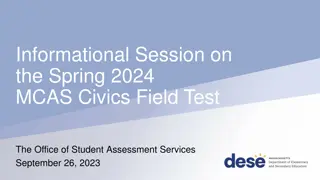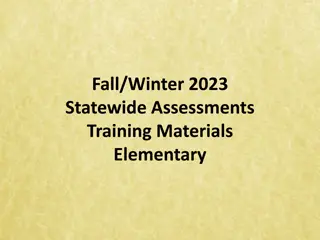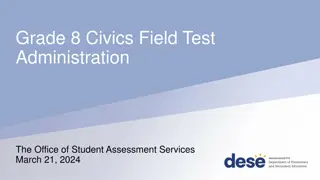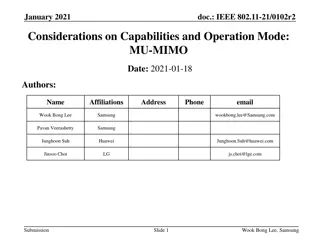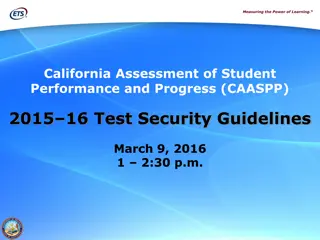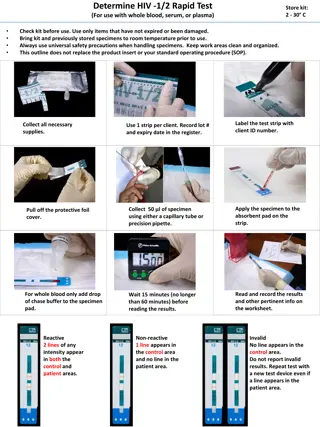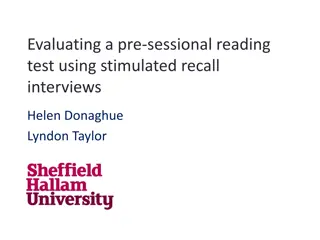
Layers of the Atmosphere & Historical Events Quiz
Test your knowledge on the layers of the atmosphere and historical events with this quiz. Learn about atmospheric layers order and key events in history such as Napoleon's defeat in Russia and America's preparations for war. Explore questions on seamanship, naval vessels, and more.
Uploaded on | 1 Views
Download Presentation

Please find below an Image/Link to download the presentation.
The content on the website is provided AS IS for your information and personal use only. It may not be sold, licensed, or shared on other websites without obtaining consent from the author. If you encounter any issues during the download, it is possible that the publisher has removed the file from their server.
You are allowed to download the files provided on this website for personal or commercial use, subject to the condition that they are used lawfully. All files are the property of their respective owners.
The content on the website is provided AS IS for your information and personal use only. It may not be sold, licensed, or shared on other websites without obtaining consent from the author.
E N D
Presentation Transcript
1. The five principal layers of the atmosphere arranged from lowest to highest are a) stratosphere, troposphere, mesosphere, thermosphere and exosphere. b) mesosphere, troposphere, stratosphere, thermosphere and exosphere. c) thermosphere, mesosphere, troposphere, stratosphere, and exosphere. d) troposphere, stratosphere, mesosphere, thermosphere and exosphere.
2. The only options open to the United States to stop expansion of Soviet communism in the first few years after World War II were to a) go to war with conventional weapons or withdraw economic assistance. b) stop demobilization or call on the United Nations. c) withhold Marshall Plan assistance or call upon the NATO alliance. d) make a diplomatic protest or use the atomic bomb.
3. In 1812, what was one major factor in Napoleon's defeat in Russia? a) A bad storm b) Delay due storm warning c) Gales and poor visibility d) The severe winter
4. Alfred Mahan predicted that America would win its 1898 war in the Caribbean in "about three months." European countries, however, believed that the United States would be defeated in a long war with a) Spain. b) Cuba. c) Mexico. d) France.
5. Why is a single-screw vessel most difficult to maneuver at very low speeds? a) The rudder effect and the side force are at their greatest. b) The rudder effect is minimal while side force is greatest. c) The rudder effect is at its greatest while side force is minimal. d) The rudder effect and side force are minimal.
6. What is seamanship? a) Skill in the use of deck equipment b) Art and skill of handling a vessel c) Care and use of various kinds of line d) All of the answers are correct
7. In the late 1890s, America was preparing for war with a) Cuba. b) Korea. c) France. d) Spain.
8. If the first letter designator of a major Navy vessel is "C," what type of ship is the vessel? a) Frigate b) Auxiliary c) Amphibious, littoral d) Cruiser
9. Select the statement about oral poisoning that is correct. a) By giving instructions over the telephone, a poison control center can usually treat most poisonings. b) Vomiting can be effective for up to one hour after the ingestion of the poison. c) Make sure the poison victim is sitting straight up throughout the treatment period. d) If the victim has swallowed a corrosive substance, induce vomiting immediately.
10. What is the name of the equipment used to measure wind speed and direction? a) Hygrometer b) Psychrometer c) Anemometer d) Odometer
11. Who chooses the name of a new Navy ship? a) Congress b) President of the United States c) Chief of Naval Operations d) Secretary of the Navy
12. Which of the following events below was NOT part of the beginning of the age of nuclear warfare in the closing days of World War II? a) Cuban development of weapons of mass destruction b) None of the answers are correct c) Allied use of the American-built atomic bomb against the Japanese cities Hiroshima and Nagasaki d) The development of the hydrogen bomb
13. A tremendous source of environmentally friendly power that can satisfy the growing needs of all civilized mankind, if it could be economically harnessed, would be a) solar energy. b) tidal energy. c) nuclear energy. d) volcanic energy.
14. Which of these terms is NOT correctly defined? a) Grid-Magnetic Angle: angular difference in direction between grid north and magnetic north, measured east or west from grid north. b) Intersection: a method of locating an unknown point by determining where the azimuths from at least two known points meet c) Field expedient: locating or plotting an unknown position from a known point by giving a direction and distance along the direction line d) Resection: a method of locating your unknown position by determining where the back azimuths from two or three locations meet
15. What command would you use to cause your platoon to make a 45-degree left turn in column? a) "Left, OBLIQUE" b) "Left, FACE" c) "To The Left, MARCH" d) "Column, LEFT"
16. What atmospheric layer lies just above the tropopause and extends to an altitude of about 30 miles? a) Exosphere b) Stratosphere c) Ionosphere d) Chemosphere
17. What is the most common anchor in use in the Navy today? a) Mushroom b) Lightweight c) Stockless d) Stern
18. What should you do if, while outdoors in civilian clothes, you hear the national anthem but the flag is not visible? a) Salute smartly the nearest officer b) Stand at attention and face in the direction of the music c) Carry on, as you are not in uniform d) Stand at attention and face in the direction of the parade field
19. What term is used to refer to the condition where the body builds a resistance to a drug, causing a need for larger amounts for the same effect? a) Tolerance b) Addiction c) Subsistence d) Dependence
20. When the senior enlisted cadet forms the company in line with those personnel to receive awards, promotions, etc. the first recipient in the priority sequence is a) other certificates. b) promotions. c) cadet awards. d) advancements.
21. The second stage of a thunderstorm is called the __________. a) mature Stage b) adult Stage c) immature Stage d) infant Stage
22. A building designed and equipped with astronomical and meteorological instruments, used to view natural phenomena, is known as a(n) a) observatory. b) astrognosy. c) lunar station. d) planetoidal.
23. Operation Overlord was the code word for the invasion of a) London. b) Normandy. c) Casablanca. d) Rome.
24. The head of a comet usually containing a nucleus is known as a a) aerolite. b) coma. c) tail. d) tektite.
25. An esprit de corps, which means______, can help minimize feelings of stress and isolation of cadets. a) common emotions b) patriotism c) psychological understanding d) group morale




